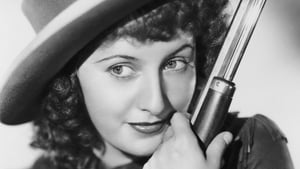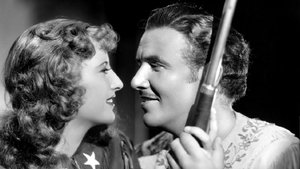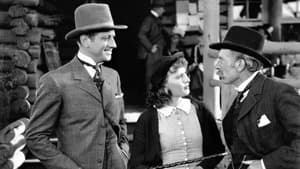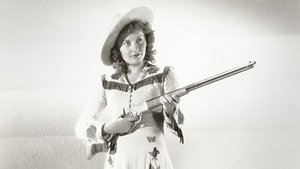Video Sources 0 Views
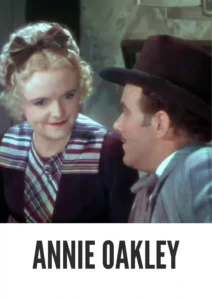
Download Annie Oakley (1935) Colorized HD | Barbara Stanwyck | Western Romance
Synopsis
Sharpshooting and Romance: Annie Oakley (1935) in Stunning Color

Step into the world of the Wild West with Annie Oakley, a captivating Western romance from 1935, now beautifully colorized for a viewing experience like never before. This film delivers a thrilling blend of sharpshooting action and heartfelt romance. Perfect for fans of classic Westerns and those seeking a taste of Hollywood’s Golden Age, this HD download brings a timeless piece of cinematic history to your screen. The movie is also known as Meet Col. Cody, Sitting Bull, and all the two-gun heroes of the plains, in the big show that astonished two continents … a livid background for the flaming love of Annie Oakley!
Annie Oakley Storyline: From Backwoods to Stardom
Annie Oakley tells the story of Annie, a young woman from the backwoods who possesses an incredible talent for sharpshooting. Her skills catch the attention of Buffalo Bill, who hires her for his Wild West Show.As Annie rises to fame, she finds herself in a rivalry with fellow sharpshooter Toby Walker. However, their competition soon turns into a budding romance, leading to both professional and personal conflicts. The film explores themes of ambition, love, and overcoming societal expectations, as Annie defies the norms of her time to become a celebrated star. Ultimately, Annie Oakley is a heartwarming and action-packed tale of a woman who blazes her own trail in the Wild West.
Movie Cast
The film features a talented cast of actors who bring this classic Western to life:
- Barbara Stanwyck as Annie Oakley
- Preston Foster as Toby Walker
- Melvyn Douglas as Jeff Hogarth
- Moroni Olsen as Col. William F. ‘Buffalo Bill’ Cody
Movie Genre
Annie Oakley falls into the genre of Western romance, with elements of action, drama, and comedy. Its exciting plot and historical setting make it a captivating and engaging film.
Historical Context: The Real Annie Oakley and Hollywood’s Golden Age
Released in 1935, Annie Oakley offers a glimpse into the life of the legendary sharpshooter while showcasing the charm and glamour of Hollywood’s Golden Age. The film was produced during a time when Westerns were a staple of American cinema, celebrating the spirit of the frontier and the heroism of its iconic figures. While Annie Oakley takes some liberties with historical accuracy, it captures the essence of its subject and the era in which she lived.
Colorization Details
This colorized version of Annie Oakley has been meticulously restored using modern digital techniques, enhancing the visual appeal while preserving the film’s original charm. The colorization process involved carefully analyzing the grayscale tones of the original black and white footage and assigning appropriate colors to each scene. This painstaking process brings new life to the characters and settings, making the story even more engaging for modern audiences. While some may debate the merits of colorizing classic films, it introduces these films to a broader audience, ensuring their legacy for future generations.
Technical Details
- Director: George Stevens
- Screenplay: Joel Sayre, John Twist
- Producer: Cliff Reid
- Cinematography: Joseph H. August
- Edited by: Jack Hively
- Production Company: RKO Pictures
- Distributed by: RKO Radio Pictures
- Runtime: 90 minutes
Technical Specifications
- Download Format: MP4
- Resolution: HD (1080p)
- Compatibility: Compatible with most devices, including smartphones, tablets, computers, and smart TVs.
Reviews and Critical Reception
Annie Oakley (1935) was a critical and commercial success, with Barbara Stanwyck’s performance earning widespread acclaim. The film is considered a classic of the Western genre, offering a blend of action, romance, and historical drama.
FAQs
- Q: What is Annie Oakley about?
- A: Annie Oakley is a Western romance about a young woman who rises to fame as a sharpshooter in Buffalo Bill’s Wild West Show.
- Q: Is this version of Annie Oakley colorized?
- A: Yes, this version has been professionally colorized to enhance the viewing experience.
- Q: What makes Annie Oakley a classic Western?
- A: Annie Oakley offers a blend of action, romance, and historical drama, with a strong female lead and a captivating story.
- Q: What is the download format?
- A: The download format is MP4, which is compatible with most devices.
- Q: What resolution is the download?
- A: The resolution is HD (1080p), providing a high-quality viewing experience.
Download Now in HD!
Watch Annie Oakley Today!
